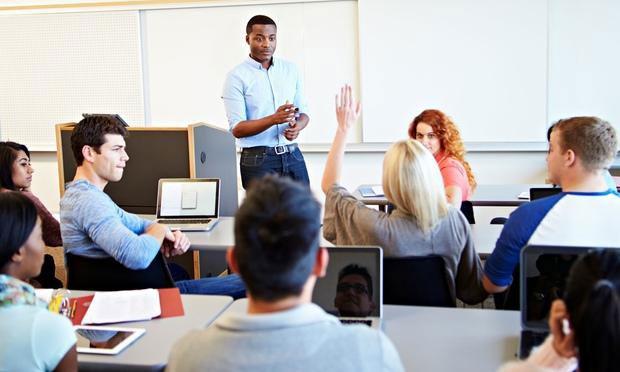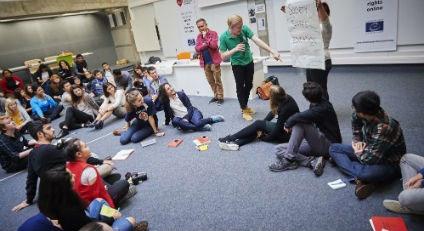
12 minute read
Education: The Importance of Understanding Education
from The People Journal
Livingstone Gangmei, M.A. in Political Science and International Relations, School of Social Science, IGNOU
e-mail: livingstonegangmei77@gmail.com
Advertisement
Introduction
India with an estimated population of approximately 1.38 billion is currently the second-largest country in terms of the number of people behind China. It is projected that India will overtake China as the largest population country within forty years. India has a young population with about 26.16 percent of the Indian population between the 0-14 age category; 67.17 percent between the 1564 age group, and the remaining 6.57 percent of its population with people of age 65 and above ( O’Neil, 2022). India has a positive demographic dividend to reap which could push and elevate the current economic growth with more boost and speed. Yet, to realise this demographic dividend, we need education policies that are world acceptable which may create an enabling environment and encourage young children and adolescents to attend and complete the basic education which will equip them with skills to be viable employees in this modern age of rapid techno-commercial development era. We are aware of the various limitations that the Union and our respective state governments have with the numerous welfare schemes being undertaken under the limited budgets. The Government of India has allot- ted an annual budget of Rs 1,04,278 crores ( which is 3.1 % of our GDP of US$ 3.05 Trillion) - which is a rise of Rs 11,054 crore from the previous year. The education budget allocation for 2021-22 was Rs. 93,223 crores ( Chakarbaty, 2022), while our neighbour China has spent 4.2 percent of its GDP of US$ 14.72 Trillion in the education sector ( World Bank). So, we know from the data that the Government of India is spending very little in the education sector, as it has to ensure the burden of numerous necessary welfare schemes undertaken to support the poor downtrodden population of our country.
Education and Students in India
According to Cambridge Dictionary, education is defined as “ the process of teaching or learning, especially in a school or college, or the knowledge that you get from home” (Cambridge Dictionary). When we hear the term “Education”, we immediately assume the “formal education” system, but it has various forms. Education has its foundation in-home, where the children have their first exposure to the world of disciplines, ethnic rules, cultural norms and basic social behaviour, etc.
Education brings changes in personal abilities, it enables people to acquire new skills which help individuals to do well in life. It facilitates individuals to question or investigate our own considerations and opinions and makes it possible to express them in various shapes. To tackle issues and do inventiveness we first need to gain proficiency with some essential abilities. We require learning and abilities to wind up increasingly imaginative. So education is fundamentally learning of abilities and ideas that can make us increasingly innovative and issue solvers.
The number of students in India is one of the largest in the world with 250 million students attending school. Here, the number of government-run school students with about 131 million students outnumber those who attend the privately-managed school with 119 million enrolled students ( Kanwa, 2021). With these numbers of students, it is imperative that people are required to and must understand the importance of education in life.
Purpose of Education
Making an individual free from the constraint and handicaps in achieving a personal goal is the ultimate purpose of education. But, to reach the fine level of an able literate individual, it takes long years of discipline schooling and required constant learning from any institutions which have taken the responsibility of imparting education.
In this Modern world, the purpose of education is to accelerate an awakening of a person’s mindfulness, so that they can contribute to the functioning of society. A learned individual can propose an idea based on the welfare of the common society. With education, people become skilled enough to create societies marked with justice, fairness, and stability.
Education train people to think freely, and form independent opinions and belief. It helps people to distinguish good from bad, and in their judgment, they gain more knowledge and impart it to others.
Type of Education
Education has various types and forms

Formal Education
Formal education or formal learning usually takes place on the premises of the school, where a person may learn basic, academic, or trade skills.

In Formal education, learning follows in systematic and structured forms. Formal education is delivered by trained teachers to students. Formal education is governed by government entities or organisations which deal with education systems, and all learning institutions comply with these standards, set by the governing organisations. (Through education, 2019)
Formal education is classroom-based, meaning everything a student learns comes from books and other educational materials with the sole purpose of educating students. Teachers in formal education are trained and licensed under the government accepted standards, only after having qualified certain minimums requirements, they will be allowed to teach students.
Various stages in Formal Education: Preschool
It is also known as early childhood learning. The children belong to the age range of 3-6. Here, they learn basics such as writing, counting, reading, etc. In some educational systems, it is mandatory to attend all the preschool levels for all the children, in others, it is not necessary if the children have the skills of reading and writing while entering primary school.
Primary School
Here, the education systems deal with the fundamentals of maths, reading, and some other basic education levels. This school is also known as grade school, and it deals with the first few years of children’s education.
Secondary School
In some education systems, it is also known as high school. It is divided into high school education, which deals in an advanced manner with more general knowledge on the subjects, and higher secondary education, it is here where it starts to focus on education relevant to employment after mandatory education. Students after graduating from here, can either opt to find employment with the knowledge they have, or they can seek further education specializing in their field of choice.
Higher education/Post-secondary School
All optional formal education after second- ary education falls under higher education post-secondary education. These include undergraduate and graduate programs, medical schools, community colleges, vocational schools, and more. This education is provided generally to help students seek education for the specialized field they wish and want to in, but those people who simply wish for further study, opt for this education. The highest level of education one can pursue is post-graduation education which includes M. Phil, and PhD.
Most of us has taken at least one form of formal education in our life. The fundamental goal of formal education is to ensure that everyone is literate, skilled and smart enough to make their own decision and decide the choice of field in which they would want to work once they become adults.
Advantages of Formal Education:
• Educational models are organized and course contents are up to date.
• Learning processes are structured systematically.
• Intermediate and final assessments are ensured to advanced students to the next learning phase
• Its achievement and certificate are recognized formally.
• Once students have completed their formal education, it is easier for that students to access jobs.

Disadvantages of Formal Education:
• The formal education system is more costly and rigid as compared to other learning forms.
• Students may adopt bad habits due to the presence of bad peer influence in the classroom.
• Some lazy students may waste time and fail to properly learn in spite of motivation from professional teachers.
Informal Education
In informal education, the education system lacks the structure and standards of formal education. Here, the learning process occurs outside the classroom, whether in educational locations like libraries and museums or in non-educational locations like at home or non-educational organizations. In an informal education setting, education is completely optional.
Informal education may be a child learning from parents (for example: how to ride a bicycle, how to play football or how to prepare a meal.) People get an informal education by going to the library and reading many books or from educational websites. ( Passion in Education, 2019)
Informal education is when you do not use any particular learning method and are not studying in a school.. In an informal education setting, conscious efforts are not involved. It is neither preplanned nor deliberate. It can be learned at home, hotel or even in the marketplace. Unlike formal education, informal education has no set curriculum, nor it does not have any fixed timetable. In-
Figure: which enable interest leaner to pursue skill through informal education formal education settings consist of experiences and living in the community or family.
Advantages of informal education
• In an informal education system, learning can be done any time anywhere from your daily experience.
• Involve activities of reading books from libraries, the internet, social media or getting assistance from an informal teacher or trainer.
• It doesn’t require hiring experts as more of the professionals may be willing to share their knowledge with the public through the internet and social media.
Disadvantages of Informal Education

• The learner may lack confidence during the process of learning.
• Discipline, attitude and good habits are absent.
• The unpredictable result may simply waste time.
• An inappropriate technique is being utilised.
Non-formal education
Non-formal education refers to personal and social education, with structured programmes specifically designed for improving the range of skills and competencies, outside any formal educational curriculum. This type of education happens in places such as sports clubs, youth organizations and drama and community groups where people meet, for example, to play games, undertake projects together, discuss, go camping or make music and drama. In this type of education, the achievements are usually difficult to certify, even if their social recognition is increasing. ( Parliamentary Assembly, 2000)
Non-formal education characteristics are:
• It is always learner-centred
• It is ideally accessible to everyone
• Should be voluntary
• It is about learning life skills and preparing oneself for an active citizen
• It involved an individual leaning along with a group and leaving with a collective approach
• It is always based on experience and action,
• The need of participants is considered while organising the learning process in the non-formal education.

Factors influencing students’ motivation in Education
Students performance and results are impacted by how parents or teachers can motivate them. Students’ behaviour and attention as well as the energy which are necessary to complete tasks are provided by motivation. Motivation is necessary and it helps sustain activities over a period of time. In education, motivation has a variety of effects on students’ preferences, behaviour, and results. Motivation encourages and urges us to perform an action, without it the completion of any task or action can be hard or even impossible ( Silva, 2020)
1. Behaviour and personality of teachers
If a student develops or has a negative emotion such as scornful, fear or dislike towards their teacher, this attitude of children can negatively affect their attitude toward the subject as a whole which is taught by that particular teacher. Even in the process of teaching, if a teacher shows a preference towards certain students or uses humiliating and derogatory language to non-performing students, it can drastically lower the student motivation in education. Teachers with personality attributes such as kindness, and optimism, who give necessary positive feedback, and encourage students when they are failing can positively affect students’ motivation to learn.
2. Teaching Methods
Teaching methods have a huge impact on maintaining the motivation of students’ education. If educators use different and innovative methods, it helps in retaining students’ curiosity and engagement, It creates diversity and prevents students from getting bored. Student freedom to choose a place to sit, and with whom to sit in class can help. Students of different backgrounds and learning abilities are going to be present in a single class, it is likely to have different styles of learning. Thus, an educator or teacher is to meet these needs by applying different teaching methods. Where innovative teaching methods are most essential is in an aspect of STEM (Science, Technology, Engineering, and Mathematics) subjects, the teaching must ensure that the skills or knowledge learned can be practically applied in real life.
3, Parental Habit and engagement with children
Students’ motivation to learn is affected by various parental habits, particularly intrinsic motivation. Tasks of parents in helping children include: inquiring about their children’s day listening actively and attending to their queries showing interest in the child’s learning material when education institutions call for parent meetings, then making it sure to attend for completion of children’s homework or study for tests must constantly be encouraged by parents
It is proven that motivation can be improved by reading. Parents’ habit such as reading to and with children helps them develop literacy faster than talking does. However, reading comprehension levels can determine students’ success in later school years.
4. Family Issues and Instability
Learning is poor when there is a lack of security in the classroom, the lack of stability and security at home has a negative impact on children’s motivation in education. Children who live in a family with both parents, usually get better grades on average than those children who don’t. Family disruption and conflicts result in poorer academic performance.
Some examples include:
• Single parenting; Divorce
• when both the parents are loss
• having a bad relationship or not having contact with the biological father or mother
• children frequently move from one home to another
As a result, in certain instances, various additional support may be needed from schools to help students with their issues.
5. Learning Environment
Learning environments include classroom or school environments, and this is another factor that affects motivation in education. The school environment refers to different regulations and norms which determine an overall learning climate in the school. Students feel safe and secure in a positive school environment, it helps to meet their basic needs and it provides an optimal environment for students to build healthy social relationships. When a learning environment has many classes with serious subjects can result in lowering motivation in education. A Learning environment must include fun elements, which can help to ease the atmosphere and improve motivation and results. School allowing enough time to play and rest can also have a positive effect.

6. Peer Relationships
The influence of peers on children increases as they grow older. Therefore, problems and conflicts with peers can make students feel less secure about their social status among peers, increase their stress levels, and lower motivation in education. Keeping an eye on any conflicts, bullying, and other peer issues can prevent serious problems.
Conclusion
It is clear that education is important for all well-round development and making a world a better place for all the people. Education helps an individual while making an important and critical decision, which have long term ramification and repurcousion for the individual and society as a whole.
Education is a complex process consisting of various forms, namely Formal education systems, Informal education systems, and Non-formal education systems. Each form of education has its advantages and disadvantages. Formal education has various stages: Pre-school, Primary School, High School, Secondary school, Post-secondary school or Higher education. Each stage is designed to equip students with competent skills and improve their learning with each different stage.
The purpose of education includes for instance, such as enabling an individual to think freely and form independent opinions and faith. To understand education is to understand the purpose of education. It is true that education motivation for children is impacted by the influence of parental habits, teacher personalities, teaching methods, and learning environment is more. Therefore, it is necessary that an educated adult help to create an atmosphere where learning motivation is always high or at least maintains the willingness to learn new skills.
It is the responsibility of the Government of India and respective state governments to invest more in the education sectors for rapid improvement in people with able skills, which will enable India to reap the benefit of the digital-led techno-commercial trade. The parents, teachers, educationists and literate adults have the responsibility of encouraging the children, adolescents and youth to attend the formal education system, join non-formal education programmes and learn the much necessary skill from informal education.
References
1. Aaron O’Neill (19 January 2022). Age Distribution in India 2010-2020.Statista.
https://www.statista.com/statistics/271315/ age-distribution-in-india/ https://www.indiatoday.in/business/budget-2022/story/union-budget-education-budget-2022-increases-by-11-86-major-areas-of-budget-allocation-education-schemes-education-plans-1907451-2022-02-01 https://data.worldbank.org/indicator/NY.GDP. MKTP.CD?locations=CN
2. Roshni Chakrabarty (1 February 2022). Education Budget 2022 increases by 11.86%: Major areas of union budget allocation, schemes covered, new plans. India Today.
3. GDP (Current US$)-China. The World Bank Data.
4. Cambridge Advanced Learner’s Dictionary & Thesaurus. Cambridge University Press.
5. Sanyukta Kamwal (24 November, 2021). Number of enrolled students in Inida 2017-2018, by school type. Statista.
6. Everything you need to know about Formal Education. Through Education
7. Types of Education: Formal, Informal & Non-formal. Passion in Education
8. Parliamentary Assembly (24 January 2000). Recommendation 1437 (2000) on non-formal edu cation. Council of Europe. CM/Del/Dec(2000)698/3.1)
9. Vitor Silva (21 November 2020). 8 Factors that Affect Students’ Motivation in Education.



